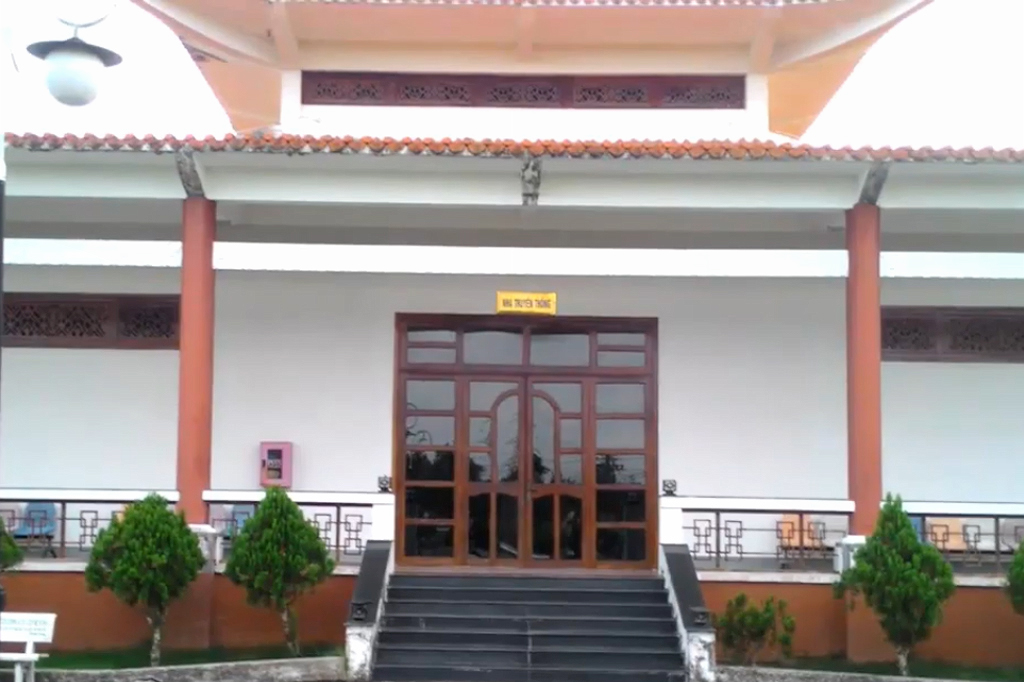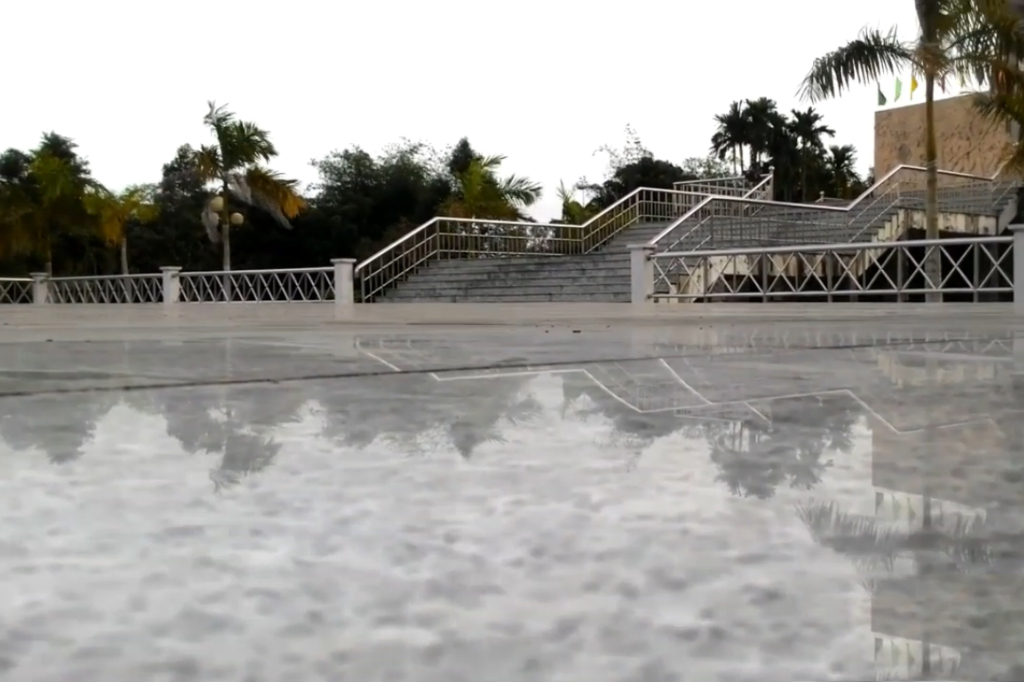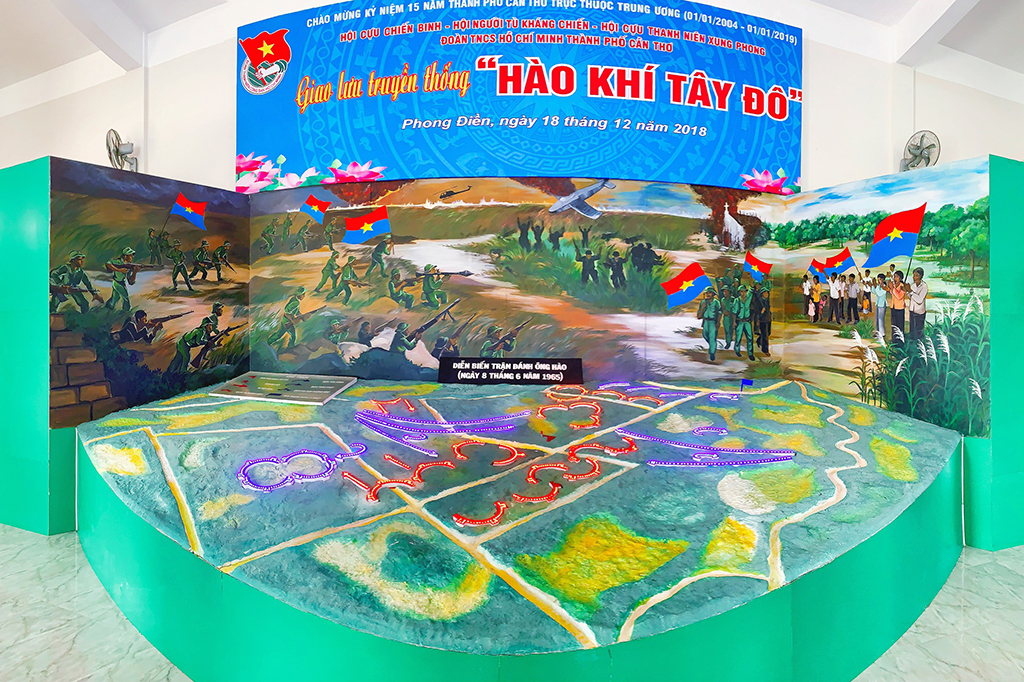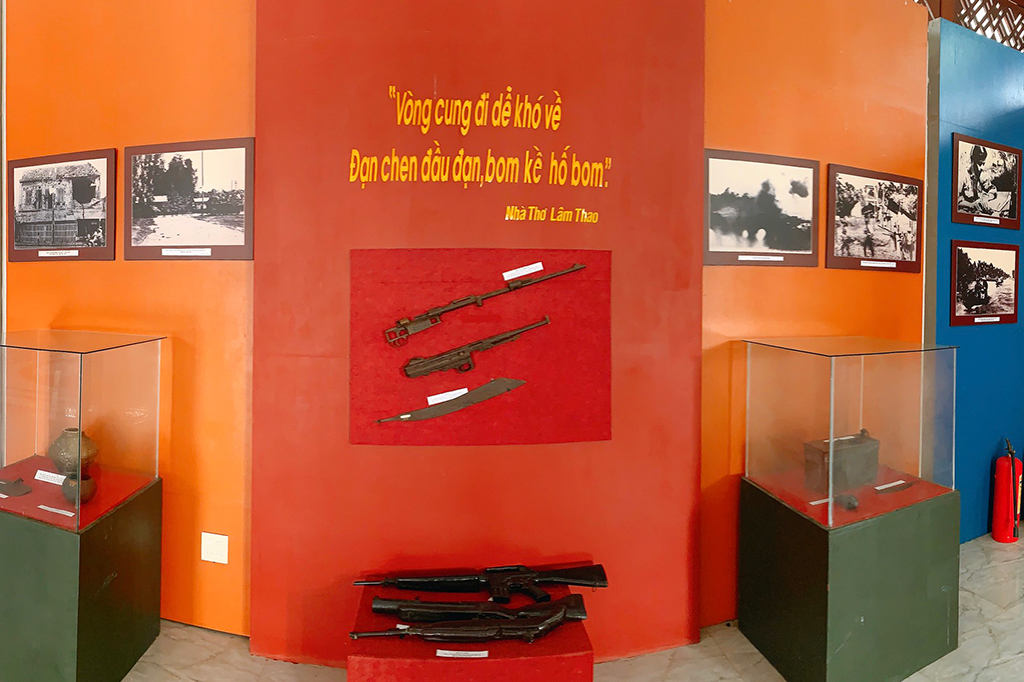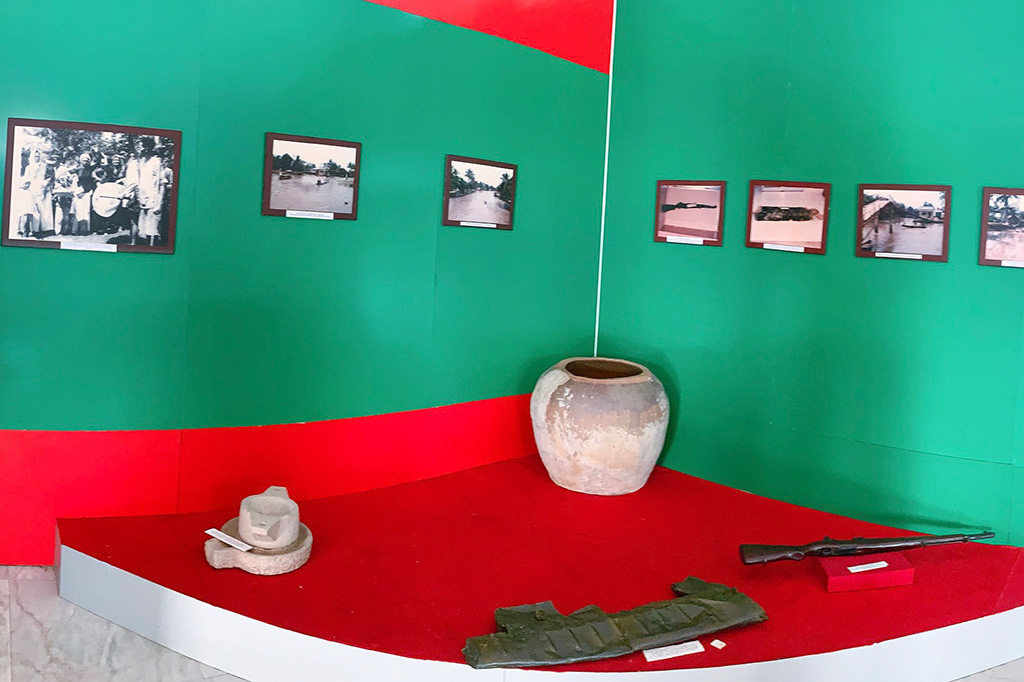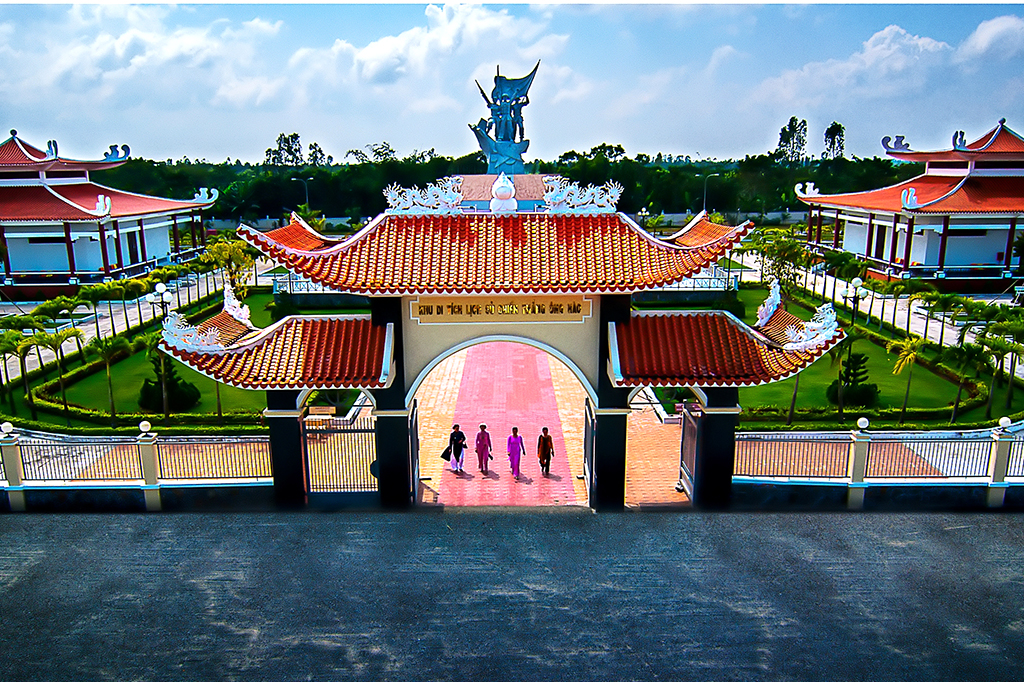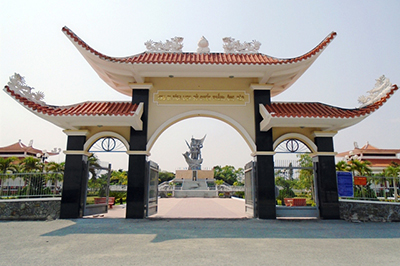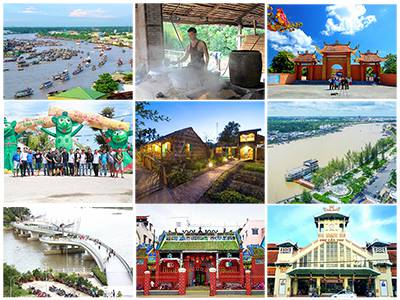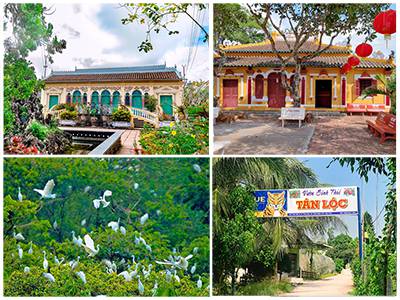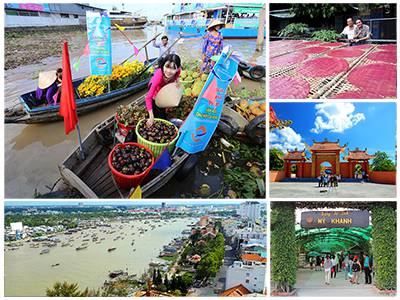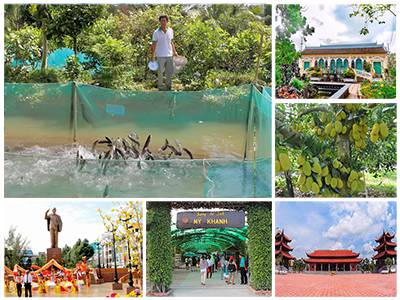Ong Hao, a victorious historical and cultural relic, is located in Truong Tho I hamlet, Truong Long commune, Phong Dien District, about 25 kilometers away from the center of Can Tho City towards the Southwest. This is the place which marked the resounding victory made by Tay Do battalion and militia and guerilla forces in O Mon District over the enemy’s Black Tiger battalion in Ong Hao canal on June 8th, 1965.
Can Tho is a very importantly strategic position which connects the provinces in the Southwest region, especially the gate way to the revolutionary base in U Minh. As for the American imperialists and the Sai Gon government, (American-backed army in Sai Gon) Can Tho is the key area of the Southwest region where they gathered the headquarters of the four tactical areas to make any war tricks and to determine on seizing Can Tho, making it a base for the provinces in the Southwest region, a remote reinforcement and defense area of Sai Gon as well as a springboard for an attack on our revolutionary base.
In 1965, the war developments in the South got more and more violent, especially when the American imperialists intervened more in the South. In addition to consolidating and building the forces of the puppet army, they increased the number of soldiers from America and its satellites who took part in the war. To protect the four tactical areas in Can Tho, they strengthened their defenses with their main forces, security forces, American consultants, spies, and so on, mopping up the crucial areas and the Southwest gateway of Can Tho with the determination to plan to pacify the South within 18 months.
In Can Tho, intense fights continued. We had to encounter many types of strategies, tactics, war facilities, modern weapons, and so on, of the American imperialists. Under the direct management of General Dang Van Quang, Commander-in-chief of the fourth tactical area, the enemies consolidated and enhanced the ability to fight for their main forces and security forces, enabling Division 21 of the Sai Gon government to stand firmly in Can Tho area. These were the main forces for mopping up operations that caused great pressure to the revolutionary bases and aimed to wipe our forces out of the province.
In early June, 1965, the enemy gathered their forces including: the battalions of the Regiments of 31, 32, 33 (Division 21); commando battalion 44, marine battalion, security battalion 429, the Black Tiger Battalion with many airplanes and armored vehicles, and so on, mopping up such communes as Truong Xuan, Truong Thanh, Truong Long of O Mon District, aiming to destroy the revolutionary bases and find and destroy the Tay Do battalion.
Able to predict the enemy’s intention, the Provincial Party Committee and the Provincial Army Section’s Steering Committee assigned the Tay Do battalion such tasks as defending, preventing, and breaking the mopping-up operations. Comrade Bui Quang Do, the battalion chief, and the battalion steering committee held a field study in the area of Ong Hao canal to make plans and fight the enemy.
On June 7th, 1965, at night, the Tay Do battalion operated towards Ang Kham canal and Ong Hao canal in Truong Long commune, O Mon District. With the local woman platoon of O Mon District, they built defending battlefields to prevent the enemy from mopping up.
On June 8th, 1965, at eight thirty in the morning, when the local woman platoon were making fortified positions, the enemy suddenly deployed their forces, directly attacking the woman platoon. Over 10 minutes of fighting, they seized our five fortified positions. After that, the woman platoon stayed calm and reorganized their forms, resiliently wiping the enemy out of the fortified positions and forcing them to flee towards the fields.
Knowing that his army failed in the first attack, Lieutenant General Dang Van Quang ordered airplane soldiers artilleryman to support the army by firing and to continue the attack on the woman platoon.
At nine thirty in the morning, L.19 scout airplanes, helicopters, and B.57 jet-planes constantly bombarded the battlefields with twelve 105 mm guns from Cai Tac, Cai Rang. Company 20 was striking back while moving into different directions in the fortified positions to avoid the enemy’s fire power.
At noon, the enemy sent two infantry platoons of Regiment 33 and Division 21. They landed by airway 500 meters away from Ong Hao canal and divided into two heads, attacking the side and the rear of our Company 20. Their plan failed because we had set Commando Company and Company 31 of Tay Do platoonwaiting in ambush. After 10 minutes of fighting, the enemy scattered in all directions, not daring to advance.
After many unsuccessful attacks, General Quang immediately mobilized Black Tiger Platoon, the one who had experience in mopping-up attack and were notorious for evil, merged with the two platoons who had failed to attack Company 20. Able to predict the enemy’s intention, Platoon Chief Bui Quang Do reorganized his army form, determining to wipe out Black Tiger Platoon.
When Black Tiger Platoon deployed their force to approach Ong Hao canal, they could not expected that they were falling into our ambush. When they were just 20 meters away from us, all ambush men suddenly fired. Meanwhile, the enemy’s helicopters constantly bombarded the battlefield to support Black Tiger Platoon. With only the second series of bullets from his Garant gun, soldier Huynh Van Teo shot down the B.57 airplane, completely controlling the enemy’s short bombarding capacity.
To rescue Black Tiger Platoon, General Quang ordered 3 squadrons to bombard and destroy our form and Ong Hao Church, causing death to 121 people, including 112 parishioners (most of them were old people, women, and children). The enemy’s massacre made our cadres, fighters, and people angry and committed to destroying the notoriously evil Black Tiger Platoon who had much blood debt with our people.
After many failures, the enemy contracted and defended over the night, waiting for the morning. Making use of the chance, Comrade Bui Quang Do summoned an emergency meeting, deploying a plan to surround and directly attack Black Tiger Platoon.
At seventeen thirty, when Company 23 of Tay Do Platoon got close to the enemy’s army form, they were suddenly discovered. Comrade Squad leader Thach Phel sacrificed. Facing the emergency situation, not able to wait for a planned cooperation, Comrade Le Thanh Son, Company Politician, ordered Company 23 to attack directly the enemy’s defending form. In only 10 minutes, Company 23 completely destroyed Black Tiger Platoon.
The battle result showed that we destroyed over 800 enemies, wiped out Black Tiger Platoon, shot down one B57 airplane, and collected lots of military equipment.
This was the first attack launched on large scale which affirmed that Can Tho armed forces were much mature when destroying the enemy’s large mopping-up operation in the IV tactical area. The victory once again confirmed the determination of Tay Do Platoon which was “Going to battlefield to win, fighting to destroy”. They were worth the truth of our Party and people and deserved to be the native people of Can Tho. After this outstanding victory, Tay Do Platoon was awardedthe Third Medal for Liberation Deeds.
With such historical significance, Ong Hao Victory Site has been ranked as a historical -cultural relic by Can Tho People’s Committee with the promulgation of the Decision No. 2569/1998/QĐ.CT.VH on September 25th, 1998.
To memorize the big favor of the soldiers and people who sold their lives dearly in the struggle for independence, national reunion, as well as to educate the present and future generations so that they feel prouder of the revolutionary traditions of their ancestors, in 2009, the Can Tho People’s Committee invested in building Ong Hao Victory Relic Area in an area of 25.748 square meters with the total expense of over 30 billion dongs. The construction was inaugurated on December 20th, 2012 to memorize 68 years after the Vietnamese People’s Army was founded. The Relic area includes such items as entrance, square, statue, relief, communal house, guest-house, park with trees, and so on.
The statue is formally put in the central square of the relic area. It is 14 meters tall and is made of firm concrete, engraving the image of the three soldiers representing three types of army taking in the fight (main force soldiers, local soldiers and guerillas) in a proud position, raising the red flag with a yellow star with the determination “Going to battle to gain victory – fighting to destroy”. The relief is made of concrete with two pieces of topics; the left piece engraves the image of our army and people launching an attack, advancing to destroy the enemies; the right piece shows our army and people’s happiness when gaining victory.
At present, the relic area is not only a place to memorize the heroic victory of Can Tho people and army in the resistance war against the invaders but also a place for cultural and spiritual activities, a site for sightseeing and returning to traditional moral values which attracts many people of different backgrounds and domestical and globaltourists. Especially, to recall Ong Hao victory date (June 8th), people in Phong Dien District hold many activities for deep recollection, cultural and arts performances, sports at the Relic area.
Lê Thị Kim Thúy
